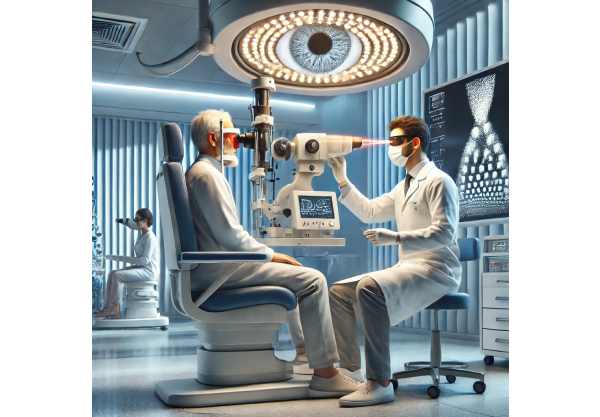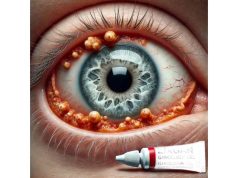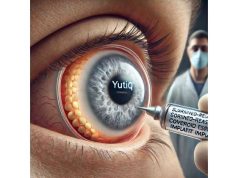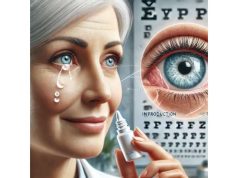
Exfoliative glaucoma, also known as pseudoexfoliation glaucoma, is a chronic and often aggressive form of secondary open-angle glaucoma that can lead to significant vision loss if not properly managed. Characterized by the accumulation of flaky, whitish material in the eye, this condition causes elevated intraocular pressure and optic nerve damage. Exfoliative glaucoma frequently poses unique challenges for both patients and eye care professionals due to its resistance to standard treatments and its link to systemic health. This comprehensive guide will help you understand the condition, explore the most up-to-date treatment options, and learn about groundbreaking innovations that are shaping the future of exfoliative glaucoma care.
Table of Contents
- Overview and Epidemiology: Understanding Exfoliative Glaucoma
- Pharmacological and Conventional Therapies: Modern Medication Approaches
- Surgical Interventions and Advanced Procedures
- Emerging Technologies and Innovative Treatments
- Clinical Research and Future Directions
- Frequently Asked Questions
- Disclaimer
Overview and Epidemiology: Understanding Exfoliative Glaucoma
Definition and Pathophysiology
Exfoliative glaucoma is a type of secondary open-angle glaucoma linked to pseudoexfoliation syndrome (PEX). PEX is marked by the production and accumulation of abnormal fibrillar material in the eye’s anterior segment, particularly on the lens, iris, ciliary body, and trabecular meshwork. This material blocks the normal drainage of aqueous humor, leading to increased intraocular pressure (IOP) and optic nerve damage.
How It Differs from Primary Open-Angle Glaucoma
- Tends to be more aggressive, with higher IOP spikes and faster progression.
- More challenging to control with medication alone.
- Often affects one eye more than the other but can become bilateral over time.
Epidemiology and Risk Factors
- Prevalence increases with age; most common in individuals over 60.
- PEX is more frequent in people of Scandinavian, Mediterranean, and some Asian descents.
- Slight female predominance has been noted in some studies.
- Risk factors include genetic predisposition, age, environmental factors (UV exposure), and certain systemic health conditions.
Symptoms and Presentation
- Most cases are asymptomatic until significant vision loss occurs.
- May present with blurred vision, halos around lights, or eye discomfort if IOP is very high.
- Eye exam reveals classic whitish “dandruff-like” flakes at the pupil margin and on the lens capsule.
Complications
- Exfoliative glaucoma is associated with greater risk of surgical complications, lens instability, and cataract development.
- Can be associated with systemic vascular issues, including increased risk of cardiovascular and cerebrovascular disease.
Practical Insights
- Regular comprehensive eye exams are crucial for early detection.
- People over 60, especially those with a family history or from high-risk populations, should ask their ophthalmologist about pseudoexfoliation during their check-ups.
Pharmacological and Conventional Therapies: Modern Medication Approaches
First-Line Medication Options
- Prostaglandin Analogs (e.g., latanoprost, bimatoprost, travoprost):
- Lower IOP by increasing the outflow of aqueous humor.
- Once-daily dosing, effective for many, but exfoliative glaucoma may require additional medications due to higher pressures.
- Beta Blockers (e.g., timolol, betaxolol):
- Decrease production of aqueous humor.
- Often used in combination with prostaglandin analogs for greater pressure reduction.
- Alpha Agonists (e.g., brimonidine):
- Reduce aqueous humor production and increase uveoscleral outflow.
- Carbonic Anhydrase Inhibitors (e.g., dorzolamide, brinzolamide):
- Decrease aqueous humor production, available as drops or oral medication for difficult cases.
- Rho Kinase Inhibitors (e.g., netarsudil):
- A newer class, improving outflow through the trabecular meshwork.
- Combination Drops:
- Two or more medications in one bottle, improving adherence and reducing preservative exposure.
Patient-Centered Practical Advice
- Set a consistent daily routine for eye drops to ensure doses are never missed.
- Learn proper drop instillation technique: tilt your head back, pull down your lower eyelid, and gently squeeze one drop in.
- Keep a medication diary or use smartphone reminders, especially if multiple drops are prescribed.
- Report any side effects (redness, irritation, blurred vision) to your eye doctor promptly.
Limitations and Challenges
- Exfoliative glaucoma is often less responsive to medications compared to primary open-angle glaucoma.
- More frequent monitoring and dose adjustments are common.
- Some patients require three or more classes of medications for adequate IOP control.
Monitoring and Lifestyle Strategies
- Regular monitoring of eye pressure, optic nerve health, and visual fields is essential.
- Maintain overall cardiovascular health—control blood pressure, cholesterol, and diabetes.
- Sunglasses with UV protection may help reduce the risk or progression of pseudoexfoliation syndrome.
Surgical Interventions and Advanced Procedures
When medications alone do not sufficiently lower intraocular pressure or are not tolerated, a variety of surgical and laser-based procedures are available. Exfoliative glaucoma often responds well to surgery, but patients must be aware of specific considerations due to the underlying syndrome.
Laser Therapies
- Selective Laser Trabeculoplasty (SLT):
- Uses short pulses of low-energy laser to target the trabecular meshwork, improving aqueous outflow.
- Can be highly effective for exfoliative glaucoma and is repeatable if pressure rises again.
- Outpatient procedure with minimal discomfort and recovery.
- Argon Laser Trabeculoplasty (ALT):
- An older laser treatment, less favored now due to greater tissue scarring risk compared to SLT.
Minimally Invasive Glaucoma Surgery (MIGS)
- iStent, Hydrus Microstent, Xen Gel Stent:
- Tiny implants inserted during cataract surgery or as standalone procedures.
- Improve drainage, lower IOP, and have a faster recovery than traditional surgery.
- Especially useful for early-to-moderate disease or when combined with cataract surgery.
Traditional Surgical Options
- Trabeculectomy:
- Creates a new drainage channel under the conjunctiva to lower IOP.
- Gold standard for advanced or poorly controlled exfoliative glaucoma.
- Requires careful postoperative care to prevent infection or scarring.
- Aqueous Shunt Devices (Ahmed, Baerveldt):
- Small tubes implanted to divert fluid to a reservoir plate, used when other surgeries fail or are not suitable.
Cataract Surgery Considerations
- Patients with pseudoexfoliation syndrome are at higher risk of cataracts and may require cataract surgery earlier.
- Extra care is taken to stabilize the lens during surgery due to zonular weakness.
- Combined cataract and glaucoma procedures are often performed for optimal results.
Postoperative Care and Risks
- Meticulous adherence to postoperative drop regimens and follow-up appointments is essential.
- Complications (bleeding, infection, over- or under-correction of pressure) are rare but possible—report vision changes or pain promptly.
Practical Tips for Surgical Patients
- Prepare questions in advance and discuss all your options with your surgeon.
- Arrange for a family member or friend to accompany you on surgery day and help with postoperative care.
Emerging Technologies and Innovative Treatments
The management of exfoliative glaucoma is evolving rapidly, with groundbreaking innovations offering hope for even better outcomes.
Advances in Diagnostics
- Anterior Segment OCT (Optical Coherence Tomography):
- Provides high-resolution imaging of the angle and outflow structures, aiding diagnosis and monitoring.
- AI-Based Screening Tools:
- Artificial intelligence algorithms are increasingly being used to analyze optic nerve photos and visual fields, identifying early glaucomatous changes missed by humans.
Drug Delivery Innovations
- Sustained-Release Implants:
- Tiny devices implanted in or near the eye slowly release pressure-lowering medication over weeks or months, reducing the need for daily drops.
- Nanoparticle Carriers:
- Research is ongoing into nanoparticles that deliver drugs directly to the trabecular meshwork for more effective IOP control.
Gene and Cell-Based Therapies
- Gene therapy is being studied for its ability to repair or modify the dysfunctional tissue responsible for pseudoexfoliation and glaucoma development.
- Stem cell-based approaches may one day restore healthy outflow tissue and reverse optic nerve damage.
Next-Generation MIGS Devices
- Devices with improved biocompatibility, longer-lasting results, and lower complication rates are under development.
- Some allow for “personalized” adjustments post-surgery to optimize IOP control.
Telemedicine and Remote Monitoring
- Wearable IOP sensors and smartphone-connected tonometers empower patients to track eye pressure at home, enabling rapid response to changes.
- Virtual consultations support ongoing care and early detection of complications.
Practical Guidance for Patients
- If you’re struggling with drop regimens, ask your provider about new drug delivery options or clinical trials.
- Stay informed about technological advances—many are first offered at leading academic eye centers.
Clinical Research and Future Directions
Ongoing research into exfoliative glaucoma is accelerating, with the goal of delivering safer, more effective, and more convenient therapies.
Current and Upcoming Clinical Trials
- Comparative Studies of MIGS Devices:
- Researchers are evaluating which implants work best for exfoliative vs. other glaucomas.
- Gene Editing and Molecular Targets:
- Trials are underway to modify genes or proteins responsible for the development of pseudoexfoliation material.
- AI-Assisted Risk Stratification:
- AI tools are being tested for earlier detection and for customizing treatment to the individual risk profile.
- New Medications and Delivery Systems:
- Long-acting eye drop formulations and depot systems are in advanced development phases.
Understanding Disease Progression
- Longitudinal studies are improving our understanding of why exfoliative glaucoma progresses more rapidly.
- Focus is also being placed on systemic associations (cardiovascular, cerebrovascular, and other risks).
The Move Toward Personalized Care
- Advances in genetics, imaging, and data analytics are paving the way for individualized therapy—selecting the right treatment at the right time for every patient.
How to Participate in Research
- Patients interested in innovative treatments may qualify for clinical trials; ask your provider or visit clinical trial registries for opportunities.
Future Outlook
- The next decade is likely to bring even more minimally invasive surgical options, smarter drug delivery systems, and perhaps the first disease-modifying therapies for pseudoexfoliation syndrome itself.
Frequently Asked Questions
What is exfoliative glaucoma and how does it differ from primary glaucoma?
Exfoliative glaucoma is a type of secondary open-angle glaucoma caused by the accumulation of abnormal material in the eye, leading to higher eye pressure. It progresses more rapidly and is often harder to control than primary open-angle glaucoma.
What are the best eye drops for exfoliative glaucoma?
First-line drops include prostaglandin analogs, beta blockers, alpha agonists, and carbonic anhydrase inhibitors. Often, multiple drops or combination drops are needed. Your doctor will tailor therapy to your individual needs and response.
When is surgery necessary for exfoliative glaucoma?
Surgery is needed when eye drops and laser therapy fail to adequately control intraocular pressure, or when medication side effects are problematic. Common surgeries include SLT, MIGS implants, and trabeculectomy.
Are there any new treatments or research for exfoliative glaucoma?
Yes, exciting advances include sustained-release drug implants, AI-guided diagnostics, gene therapy, and minimally invasive surgical devices. Clinical trials for new medications and technologies are ongoing.
Is exfoliative glaucoma hereditary?
There is a genetic component; family history increases risk, but environmental factors (like UV exposure) also play a role. Genetic testing and counseling may be available at some centers.
Can exfoliative glaucoma cause blindness?
If not properly managed, exfoliative glaucoma can lead to significant vision loss or blindness. Early diagnosis, regular monitoring, and adherence to treatment are essential to preserve sight.
How often should I see my eye doctor if I have exfoliative glaucoma?
Most patients require visits every 3–4 months, or more often if eye pressure is not well controlled or if there are changes in vision. Follow your doctor’s specific recommendations closely.
Disclaimer
The information provided in this article is for educational purposes only and does not substitute for professional medical advice, diagnosis, or treatment. Always consult a qualified eye care provider with questions about your specific symptoms or therapies. Never disregard professional advice or delay seeking care because of something you have read here.
If you found this guide useful, please share it on Facebook, X (formerly Twitter), or any platform you prefer. Your support helps us continue creating high-quality health information. Follow us for updates and new articles!










